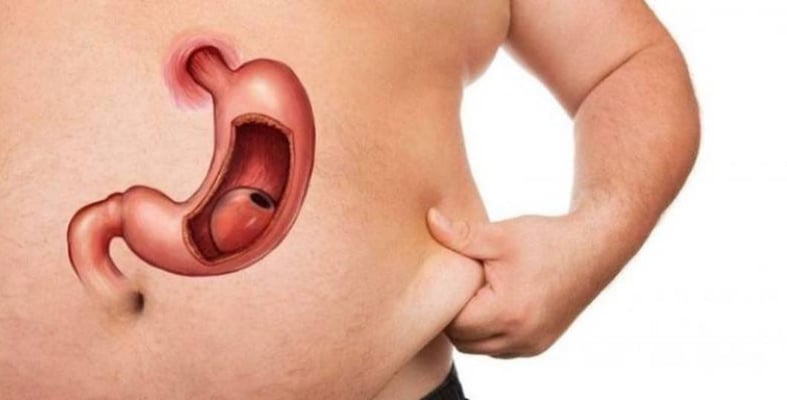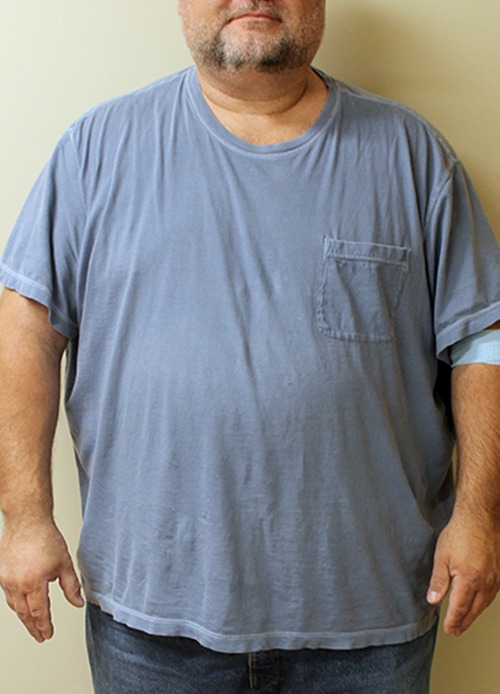Gastric Sleeve in Turkey

Weight loss surgery or bariatric surgery is the most effective solution for dealing with severe obesity and its complications, and perhaps one of the best procedure of these is laparoscopic sleeve gastrectomy or gastric sleeve.
best bariatric surgery in turkey for weight loss is sleeve gastrectomy by involves excision of the bigger curved part of stomach , after this procedure of gastric sleeve in turkey , excision what remains of the stomach is relatively ,which resembles a or thin tube .
Table of content
- Gastric Sleeve surgery information
- A Gastric Sleeve procedure step by step
- Gastric Sleeve surgery cost in turkey
- Gastric Sleeve surgery success rate in turkey
- More information about Gastric Sleeve
- Can you have babies after Gastric Sleeve surgery?
- Does Gastric Sleeve surgery change your personality?
- Why take vitamins after bariatric surgery?
- Gastric Sleeve surgery how much do you have to weigh?
- What weight loss surgery can you have after gastric bypass?
- How much vitamin D should I take after gastric bypass?
- Does Gastric Sleeve surgery shorten your life?
- More information about Gastric Sleeve
Gastric Sleeve surgery information
The popularity for gastric sleeve procedure has increased dramatically in the last decade, for example, in 2016, more than 120,000 gastric sleeve procedures were performed in the United States alone, which makes up 58% of the total weight loss surgeries that year, compared to less than 20% in the year before.
Gastric Sleeve surgery definition
The surgical procedure of gastric sleeve involves excision of the bigger curved part of the stomach, and after this excision what remains of the stomach is a relatively small part of it, which resembles a sleeve or a thin tube, hence the name.
How gastric sleeve surgery works ?
Gastric sleeve helps you lose weight through two main mechanisms:
One of them is purely mechanical (reducing the amount of food the stomach can accommodate), and the other is hormonal or chemical (appetite suppression).
Let’s speak about these two mechanisms in a nutshell.
The mechanical mechanism is basically the significant reduction of the size of the stomach after gastric sleeve procedure, which decreases the amount of food that a person can consume before feeling full.
The hormonal factor is the major change that happens to the levels of hormones that control appetite after sleeve gastrectomy, for example, a significant decline in the levels of ghrelin -which is the hunger hormones- was observed secondary to the excision of the gastric fundus. This change results in suppression of appetite.
Gastric sleeve also increases the secretion of another hormone called: glucagon-like hormone-1 or GLP-1, which increases insulin secretion and delays gastric emptying and this also reduces hunger cravings and suppresses appetite.
Types of Gastric Sleeve surgery
The types of sleeve gastrectomy used are divided into surgical (open) or laparoscopic.
In terms of size, it is divided into partial and total.
It is worth noting that there are common names for this operation, such as gastrectomy and Gastric Sleeve, all of which are intended as a sleeve gastrectomy.
Gastric Sleeve surgery benefits
According to a study conducted in 11 countries that involved more than 24 health centers, the effectiveness of this type of operation has been proven for diabetes patients, metabolic syndrome patients, and those with inflammatory bowel disease.
Sleeve gastrectomy procedure can also help improve diabetes type II symptoms, and in some cases it results in normal blood glucose levels and that means total cure of the disease.
Gastric Sleeve surgery side effects
- Complications of general anesthesia.
- Bleeding from the site of the operation.
- The probability of leakage of the operation site is 1%.
- The possibility of a narrowing at the site of the sleeve gastrectomy is 1%, and it can be treated with oral endoscopy.
Complications of Gastric Sleeve surgery
- Bleeding at the site of the operation.
- Strictures or narrowing in 1%, and this can be easily treated with oral endoscopy.
- Gastroesophageal reflux disease
Gastric Sleeve surgery effect on digestion
The procedure results in a reduction of the stomach size by 50% to 85%, which will decrease the total surface area of the stomach and change your overall digestion process, also cause you to eat less.
Risks of Gastric Sleeve surgery
As with any surgery, sleeve gastrectomy involves some potential health risks, which appear in the short and long term. Risks associated with sleeve gastrectomy may include:
- Heavy bleeding
- Inflammations.
- Blood clots.
- Lung or breathing problems.
- Leakage from the incision in the stomach.
Also, after sleeve gastrectomy surgery, some long-term risks and complications may begin to appear, and these complications include:
- Digestive blockage.
- hernia.
- Gastroesophageal reflux.
- Low blood sugar (hypoglycemia).
- Malnutrition.
- Vomiting


Requirements for gastric sleeve surgery
The obesity patient needs to meet some criteria to qualify for gastric sleeve, and these criteria depend upon their body mass index, according to the following:
- A body mass index of 35-40 kg/m2, with the presence of serious complications of obesity, such as diabetes, sleep disorders, snoring, high blood pressure, and coronary artery diseases, among others.
- A body mass index of 30-35 kg/m2, with difficulty controlling blood glucose levels or the presence of metabolic syndrome.
Gastric Sleeve surgery and pregnancy
We advise our patients and visitors to wait at least 18 months after the surgery for their weight to stabilize before getting pregnant.
A Gastric Sleeve procedure step by step
The surgeon staples off more than half of the stomach vertically using surgical stapler, and then takes that part out, decreasing the volume of the stomach significantly and changing its shape to become a sleeve-like thin tube, and this anatomical change in the stomach helps reduce the amount of food that the stomach can accommodate before feeling full.
The operation is performed under general anesthesia; the surgeon opens a few tiny openings, each of which is 3 cm in length, and surgical instruments are advanced through these openings, along with a camera with strong illumination device to enhance vision during the operation, and the surgeon follows what’s happening inside the abdominal cavity via an electronic screen in front of them.
The abdominal cavity is insufflated with inert carbon dioxide, and most of the stomach is isolated and then excised vertically as we mentioned earlier.
Gastric Sleeve surgery before care
At Ilajak Medical we examine each patient very carefully, after proper examination and eligibility tests, if the patient is eligible for Gastric Sleeve surgery, we start with a detailed medical history including medications, allergies, and blood tests.
- Patients are requested to fast for 8 hours before the procedure.
- Avoid consuming caffeinated beverages approximately one month before surgery.
- We make sure that you are at your pre-surgery weight loss goal, give you pre-surgery instructions, including a workout routine and daily calorie range, and help you complete important forms.
Gastric Sleeve surgery and alcohol
We constantly advise our patients and visitors to stop consuming alcohol before or after the surgery due to its unwanted impact on the surgery and the health.
Gastric Sleeve surgery dumping syndrome
Dumping syndrome is common after Gastric Sleeve Surgery, cause the food is reaching the intestine in a faster manner. It is a group of symptoms that may result from having part of your stomach removed.
The symptoms range from mild to severe and often subside with time.
Video of Gastric Sleeve surgery in turkey
We have produced the following video explaining the gastric sleeve procedure in Arabic, we are working day and night to produce videos for all medical procedures in all languages for the convenience of our visit and those who are interested to avail our services.
Gastric Sleeve surgery how long does it take
The Gastric Sleeve Surgery takes about two hours.
It is performed through a semi-invasive laparoscopic operation, so it requires only small incisions.
Sleeve gastrectomy patients usually stay in the hospital for about one to two days.
Gastric Sleeve surgery aftercare
The patient stays in the hospital for one night after the operation, where the patient experiences some nausea after the operation, and he is treated with anti-nausea medicines and painkillers.
The patient begins drinking small amounts of water and liquid foods the morning after the operation, and these quantities are gradually increased if the patient accepts the food without vomiting and nausea, to reach a complete liquid diet.
After the patient is discharged from the hospital, a diet is determined for him/her, which includes water and fluids, and the diet continues for a short period after the operation, and the liquid diet is gradually converted into a normal diet.
Gastric Sleeve surgery recovery
The patient stays in the hospital for one night after the operation.
The patient may feel some nausea or mild pain postoperatively, these complaints can be easily addressed with anti-nausea medications and/or pain killers.
A short period after the procedure the patient can drink small quantities of water and liquid foods, and those quantities can be gradually increased if the patient tolerates them without vomiting or nausea, until reaching a complete liquid diet.
Upon discharge from the hospital, the surgeon and the dietitian give the patient instructions about their diet, which includes water and fluids.
This liquid diet continues for a short period after the operation and then gets gradually converted into a regular diet after a period of about 4 weeks.
Gastric Sleeve surgery diet
After gastric sleeve operation, patients should stick to eating low-fat and sugar-free foods, including lean protein sources and non-fibrous vegetables.
After the surgery, some tips can help you stay on the right track, which will ensure you recover from the surgery, and these tips include:
- Use a blender or food processor to mash foods.
- Learn to recognize the difference between hunger (physical) and appetite (mental/emotional).
- Don't overeat - this will stretch your stomach.
- Chew food slowly.
- Avoid foods high in trans fats, and fried, processed, and fast foods.
- Avoid dehydration, by sipping water.
- Eat foods that contain vitamins and supplements.
- Avoid taking over-the-counter medications. Which may reduce the protective natural stomach coating
Gastric Sleeve surgery life expectancy
The gastric sleeve surgery is long term and permanent procedure, but experts concluded that sleeve gastrectomy is effective nearly 6 years after the initial operation, with nearly 60% of excessive BMI still gone and a "considerable improvement or even remission" of comorbidities, it is worth noting that the stomach is built to stretch it is better to adopt a healthier and better lifestyle and diet.
Gastric Sleeve surgery cost in turkey
The cost of the sleeve gastric sleeve surgery ranges from 2,700 to 3,200 USD, and also depends on the health condition and the accompanying program.
Gastric Sleeve surgery success rate in turkey
Weight loss: After two years of the procedure, the patient loses 60 percent of their excess weight, and most of patients can reach a BMI of 25-32 depending on their weight before the operation.
Type 2 diabetes and glucose control: in 66% of patients, significantly better blood glucose levels were achieved according to a study in which patients were evaluated for 13 months after the operation.
Questions and answers about sleeve gastrectomy
More information about Gastric Sleeve
Can you have babies after Gastric Sleeve surgery?
Gastric sleeve surgery does not alter perinatal mortality or congenital malformations; however, you should wait at least 18 months for your weight to stabilize before getting pregnant.
Does Gastric Sleeve surgery change your personality?
Gastric Sleeve surgery results in physical changes more than psychological and behavioral changes, however, it is generally associated with improved mental health and quality of life.
Why take vitamins after bariatric surgery?
Obesity treatments make slight changes in the way your body absorbs some nutrients, in addition to the amount of food you eat has been greatly reduced, so taking vitamins and nutritional supplements is necessary. (السؤال مكرر)
Gastric Sleeve surgery how much do you have to weigh?
As a general rule people who want to have bariatric surgery should have 40 BMI or above.
What weight loss surgery can you have after gastric bypass?
A second surgery to repair — or redo — a gastric bypass may be appropriate.
This is especially true if the result below expectation or you can further decrease the surface area.
How much vitamin D should I take after gastric bypass?
According to “Endocrine Society Clinical Practice Guideline: recommendations:
- The first phase (weeks 1-2, liquids): oral vitamin D 50,000 IU daily.
- The second phase (weeks 3-6, soft food): Calcitriol D 1,000 IU daily.
- Vitamin D can be provided with Ergocalciferol, 50,000IU one to three times per week.
Does Gastric Sleeve surgery shorten your life?
Gastric sleeve surgery results in fewer life-threatening complications improve health conditions and longer life expectancy.
Do you have an inquiry? Contact us - For FREE Consultation.
Ilajak Medical | A passion for care




Treatment Services
In the Best Medical Centers
Contact Us
Please fill the form below and describe your condition, We will contact you back
- Dental Treatment
- Hair Transplant
- Obesity Surgery
- Vision Correction
- Health Resorts
- Other Medical Services
- No elements found. Consider changing the search query.
- List is empty.
Your personal data is processed as indicated in the general statement text and by continuing, you explicitly consent to the processing







